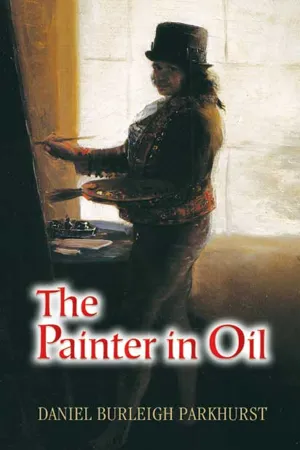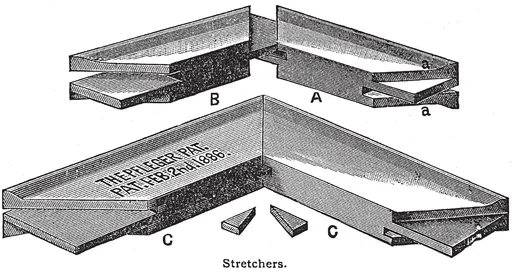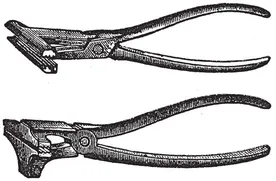
This is a test
- 432 pages
- English
- ePUB (mobile friendly)
- Available on iOS & Android
eBook - ePub
The Painter in Oil
Book details
Book preview
Table of contents
Citations
About This Book
A widely cited resource on painting in the style of the old masters, this classic guide contains a wealth of insights for amateur and professional artists. Daniel Burleigh Parkhurst, one of the foremost artist/instructors of the early 20th century, presents a master's course in the science and technique of painting that encourages the use of traditional tools and methods.
Parkhurst's four-part treatment encompasses materials, general principles, technical principles, and practical applications. Topics include canvases, easels, brushes, paints, and other tools; attitude and originality; drawing, perspective, light and shade, composition, and color; and sketching, still life, flowers, portraits, landscapes, and figures. 64 illustrations enhance this informative manual.
Parkhurst's four-part treatment encompasses materials, general principles, technical principles, and practical applications. Topics include canvases, easels, brushes, paints, and other tools; attitude and originality; drawing, perspective, light and shade, composition, and color; and sketching, still life, flowers, portraits, landscapes, and figures. 64 illustrations enhance this informative manual.
Frequently asked questions
At the moment all of our mobile-responsive ePub books are available to download via the app. Most of our PDFs are also available to download and we're working on making the final remaining ones downloadable now. Learn more here.
Both plans give you full access to the library and all of Perlego’s features. The only differences are the price and subscription period: With the annual plan you’ll save around 30% compared to 12 months on the monthly plan.
We are an online textbook subscription service, where you can get access to an entire online library for less than the price of a single book per month. With over 1 million books across 1000+ topics, we’ve got you covered! Learn more here.
Look out for the read-aloud symbol on your next book to see if you can listen to it. The read-aloud tool reads text aloud for you, highlighting the text as it is being read. You can pause it, speed it up and slow it down. Learn more here.
Yes, you can access The Painter in Oil by Daniel Burleigh Parkhurst in PDF and/or ePUB format, as well as other popular books in Art & Techniques d'art. We have over one million books available in our catalogue for you to explore.
Information
Topic
ArtSubtopic
Techniques d'artPART I
MATERIALS
CHAPTER I
GENERAL OBSERVATIONS
THERE is a false implication in the saying that “ a poor workman blames his tools.” It is not true that a good workman can do good work with bad tools. On the contrary, the good workman sees to it that he has good tools, and makes it a part of his good workmanship that they are in good condition.
In painting there is nothing that will cause you more trouble than bad materials. You can get along with few materials, but you cannot get along with bad ones. That is not the place to economize. To do good work is difficult at best. Economize where it will not be a hindrance to you. Your tools can make your work harder or easier according to your selection of them. The relative cost of good and bad materials is of slight importance compared with the relative effect on your work.
The way to economize is not to get anything which you do not need. Save on the non-essentials, and get as good a quality as you can of the essentials.
Save on the number of things you get, not on the quantity you use. You must feel free in your use of material. There is nothing which hampers you more than parsimony in the use of things needful to your painting. If it is worth your while to paint at all, it is worth your while to be generous enough with yourself to insure ordinary freedom of use of material.
The essentials of painting are few, but these cannot be dispensed with. Put it out of your mind that any one of these five things can be got along without: —
You must have something to paint on, canvas or panel. Have plenty of these.
You must have something to set this canvas on — something to hold it up and in position. Your knees won’t do, and you can’t hold it in one hand. The lack of a practical easel will cost you far more in trouble and discouragement than the saving will make up for.
You must have something to paint with. The brushes are most important; in kind, variety, and number. You cannot economize safely here.
You must have paints. And you must have good ones. The best are none too good. Get the best. Pay a good price for them, use them freely, but don’t waste them.
And you must have something to hold them, and to mix them on ; but here the quality and kind has less effect on your work than any other of your tools. But as the cost of the best of palettes is slight, you may as well get a good one.
Now, if you will be economical, the way to do it is to take proper care of your tools after you have got them. Form the habit of using good tools as they should be used, and that will save you a great deal of money.
CHAPTER II
CANVASES AND PANELS
You should have plenty of canvas on hand, and it would be well if you had it all stretched ready for use. Many a good day’s work is lost because of the time wasted in getting a canvas ready. It is not necessary to have many kinds or sizes. It is better in fact to settle on one kind of surface which suits you, and to have a few practical sizes of stretchers which will pack together well, and work always on these. You will find that by getting accustomed to these sizes you work more freely on them. You can pack them better, and you can frame them more conveniently, because one frame will always do for many pictures. Perhaps there is no one piece of advice which I can give you which will be of more practical use outside of the principles of painting, than this of keeping to a few well-chosen sizes of canvas, and the keeping of a number of each always on hand.
It is all well enough to talk about not showing one’s work too soon. But we all do, and always will like to see our work under as favorable conditions as possible. And a good frame is one of the favorable conditions. But good frames are expensive, and it is a great advantage to be able to have a frame always at hand which you can see your work in from time to time; and if you only work on four sizes of canvas, say, then four frames, one for each size, will suit all your pictures and sketches. Use the same sizes for all kinds of work too, and the freedom will come, as I say, in the working on those sizes.
Don’t have odd sizes about. You can just as well as not use the regular sizes and proportions which colormen keep in stock, and there is an advantage in being able to get a canvas at short notice, and it will be one of your own sizes, and will fit your frame. All artists have gone through the experience of eliminating odd sizes from their stock, and it is one of the practical things that we all have to come down to sooner or later, and the sooner the better, — to have the sizes which we find we like best, not too many, and stick to them. I would have you take advantage of this, and decide early in your work, and so get rid of one source of bother.
Rough and Smooth. — The best canvas is of linen. Cotton is used for sketching canvas. But you would do well always to use good grounds to work on. You can never tell beforehand how your work will turn out ; and if you should want to keep your work, or find it worth while to go on with it, you would be glad that you had begun it on a good linen canvas. The linen is stronger and firmer, and when it has a “ grain,” the grain is better.
Grain. — The question of grain is not easy to speak about without the canvas, yet it is often a matter of importance. There are many kinds of surface, from the most smooth to the most rugged. Some grain it is well the canvas should have; too great smoothness will tend to make the painting “slick,” which is not a pleasant quality. A grain gives the canvas a “tooth,” and takes the paint, better. Just what grain is best depends on the work. If you are going to have very fine detail in the picture use a smoothish canvas ; but whenever you are going to paint heavily, roughly, or loosely, the rough canvas takes the paint better. The grain of the canvas takes up the paint, helps to hold it, and to disguise, in a way, the body of it. For large pictures, too, the canvas must necessarily be strong, and the mere weight of the fabric will give it a rough surface.
Knots. — For ordinary work do not be afraid of a canvas which has some irregularities and knots on it. If they are not too marked they will not be unpleasantly noticeable in the picture, and may even give a relief to too great evenness.
Twilled Canvas. — The diagonal twill which some canvases have has always been a favorite surface with painters, particularly the portrait painters. This grain is a sympathetic one to work on, takes paint well, and is not in any way objectionable in the finished picture.
The best. — The best way is to try several kinds, and when you find one which has a sympathetic working quality, and which has a good effect in the finished picture, note the quality and use it. You will find such a canvas among both the rough and smooth kinds, and so you can use either, as the character of your work suggests. It is well to have both rough and smooth ready at hand.
Absorbent. — Some canvases are primed so as to absorb the oil during the process of painting. They are very useful for some kinds of work, and many painters choose them ; but unless you have some experience with the working of them, they are apt to add another source of perplexity to the difficulties of painting, so you had better not experiment with them, but use the regular non-absorbent kinds.
Old and New. — The canvas you work on should not be too freshly primed. The painting is likely to crack if the priming is not well dried. You cannot always be sure that the canvas you get at stores is old, so you have an additional reason for getting a good stock and keeping it on hand. Then, if you have had it in your own possession a long while, you know it is not fresh. Canvas is all the better if it is a year old.
Grounds. — The color of the grounds should be of interest to you. Canvases are prepared for the market usually in three colors, — a sort of cool gray, a warm light ochrish yellow, and a cool pinkish gray. Which is best is a matter of personal liking. It would be well to consider what the effect of the ground will be on the future condition of the picture when the colors begin to effect each other, as they inevitably will sooner or later.
Vibert in his “La Science de la Peinture” advocates a white ground. He says that as the color will be sure to darken somewhat with time, it is well that the ground should have as little to do with it as possible. If the ground is white there is so much the less dark pigment to influence your painting. He is right in this; but white is a most unsympathetic color to work over, and if you do not want to lay in your work with frottées, a tint is pleasanter. For most work the light ochrish ground will be found best; but you may be helped in deciding by the general tone of your picture. If the picture is to be bright and lively, use a light canvas, and if it is to be sombre, use a dark one. Remember, too, that the color of your ground will influence the appearance of every touch of paint you put on it by contrast, until the priming is covered and out of sight.
Stretchers. — The keyed stretcher, with wedges to force the corners open and so tighten the canvas when necessary, is the only proper one to use. For convenience of use many kinds have been invented, but you will find the one here illustrated the best for general purposes. The sides may be used for ends, and vice versa. If you arrange your sizes well, you will have the sides of one size the right length for the ends of another. Then you need fewer sizes, and they are surer to pack evenly.

Stretchers.
Stretching. — You will often have to stretch your own canvases, so you should know how to do it There is only one way to make the canvas lay smoothly without wrinkles: Cut the canvas about two inches longer and wider than the stretcher, so that it will easily turn down over the edges. Be. gin by putting in one tack to hold the middle of one end. Then turn the whole thing round, and stretch tightly lengthwise, and put a tack to hold it into the middle of the other end. Do the same way with the two sides. Only four tacks so far, which have stretched the canvas in the middle two ways. As you do this, you must see that the canvas is on square. Don’t drive the tacks all the way in at first till you know that this is so. Then give each another blow, so that the head binds the canvas more than the body of the tack does ; for the pull of the canvas against the side of the tack will tear, while the head will hold more strands. This first two ways stretching must be as tight as any after stretching will be or you will have wrinkles in the middle, while the purpose is to pull out the wrinkles towards the corners. Now go back to the ends: stretch, and place one tack each side of the first one. In a large canvas you may put two each side, but not more, and you must be sure that the strain is even on both sides. Don’t pull too much; for next you must do the same with the other end which should bear half of the whole stretch. Do just the same now with the two sides. Now continue stretching and tacking, — each side of the middle tacks on each end, then on each side, then to the ends again, and so gradually working towards the corners, when as you put in the last tacks the wrinkles will disappear, if you have done your work well. Don’t hurry and try to drive too many tacks into a side at a time, for to have to do it all over again would take more time than to have worked slowly and done it properly. You may of course stretch a small canvas with your hands, but it will make your fingers sore, and you cannot get large canvases tight without help. You will do well to have a pair of “canvas pliers” which are specially shaped to pull the canvas and hold it strongly without tearing it, as other pliers are sure to do.

Canvas Pliers.
When you take canvases outdoors to work, you will find it useful to strap two together, face inwards, with a double-pointed tack like this in each corner to keep them apart. You will not have any trouble with the fresh paint, as each canvas will then protect the other. You can pack freshly painted canvases for shipping in the same way.

Double-pointed
Tack.
Panels. — For small pictures panels are very useful, and when great detail is desirable, and fine, smooth work would make an accidental tear impossible to mend well, they are most valuable. They are made of mahogany and oak generally.
Panels are useful, too, for sketching, as you can easily pack them. They are light, and the sun does not shine through the backs. You can get them for about the same cost as canvas for small sizes, which are what you would be likely to use, and they are often more convenient, particularly for use in the sketch-box.
CHAPTER III
EASELS
THE important thing in an easel is that it should be steady an...
Table of contents
- Title Page
- Copyright Page
- PREFACE TO THE SECOND EDITION
- PREFACE
- Table of Contents
- PART I - MATERIALS
- PART II - GENERAL PRINCIPLES
- PART III - TECHNICAL PRINCIPLES
- PART IV - PRACTICAL APPLICATION
- INDEX